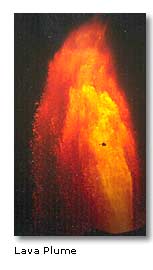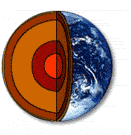|
|
 |
 The Division of Earth Sciences supports proposals for research geared toward improving the
understanding of the structure, composition, and evolution of the Earth and the processes that
govern the formation and behavior of the Earth's materials. The results of this research will
create a better understanding of the Earth's changing environments, and the natural distribution
of its mineral, water, and energy resources and provide methods for predicting and mitigating The Division of Earth Sciences supports proposals for research geared toward improving the
understanding of the structure, composition, and evolution of the Earth and the processes that
govern the formation and behavior of the Earth's materials. The results of this research will
create a better understanding of the Earth's changing environments, and the natural distribution
of its mineral, water, and energy resources and provide methods for predicting and mitigating
 the effects of geologic hazards such as earthquakes,
volcanic eruptions, floods, and landslides.
the effects of geologic hazards such as earthquakes,
volcanic eruptions, floods, and landslides.
Earth
science is the study of the Earth's structure, properties, processes, and evolution.
Understanding these phenomena is essential to maintenance of life on the planet. The
expanding world population demands more resources; faces increasing losses from natural
hazards; and releases more pollutants to the air, water, and land. Sustaining our
existence requires scientific understanding of the natural materials and processes
linking the geosphere, hydrosphere, atmosphere, and biosphere. Life prospers or
fails at the surface of the Earth where these environments intersect.
The knowledge gained and
the services provided by earth scientists help society cope with its environment
in many ways. Their knowledge about the structure and chemical composition of the
earth's crust helps us locate resources that sustain and advance our quality of life.
Understanding the forces in the crust and the natural processes on the surface allows
us to anticipate natural disasters such as volcanoes and earthquakes, and reduce
their damaging effects on civilization. Observing civilization's negative impacts
on geologic environments, such as damaging mining practices or improper waste
disposal, gives us information to correct such practices and design more benign
procedures for the future. Finally, a comprehensive perception of planetary physics
will allow us to anticipate major changes in global environmental conditions and
control or acclimate to those changes.
In general use, the term
"earth science" often includes the study of the earth's atmosphere
(meteorology or atmospheric science), the water flowing on and beneath
 the surface of continents (hydrology), and the earth's seas and oceans
(oceanography or ocean sciences). The NSF organizational
taxonomy defines earth science as including the fields of "solid-earth"
science (geology, geochemistry, and geophysics (plus continental hydrology.
It excludes the "fluid-earth" sciences of oceanography and atmospheric science,
which have their own respective divisions in the organization, and are covered
in other reports in this series. The NSF Division of Earth Sciences is part of
the Geosciences Directorate that also includes the divisions of Atmospheric
Sciences and Ocean Sciences. The term "geosciences" is similarly used to
represent only the "solid-earth" sciences or solid and fluid sciences
depending on the context, so care must be always exercised when interpreting
data regarding the earth science fields from various sources.
the surface of continents (hydrology), and the earth's seas and oceans
(oceanography or ocean sciences). The NSF organizational
taxonomy defines earth science as including the fields of "solid-earth"
science (geology, geochemistry, and geophysics (plus continental hydrology.
It excludes the "fluid-earth" sciences of oceanography and atmospheric science,
which have their own respective divisions in the organization, and are covered
in other reports in this series. The NSF Division of Earth Sciences is part of
the Geosciences Directorate that also includes the divisions of Atmospheric
Sciences and Ocean Sciences. The term "geosciences" is similarly used to
represent only the "solid-earth" sciences or solid and fluid sciences
depending on the context, so care must be always exercised when interpreting
data regarding the earth science fields from various sources. |




